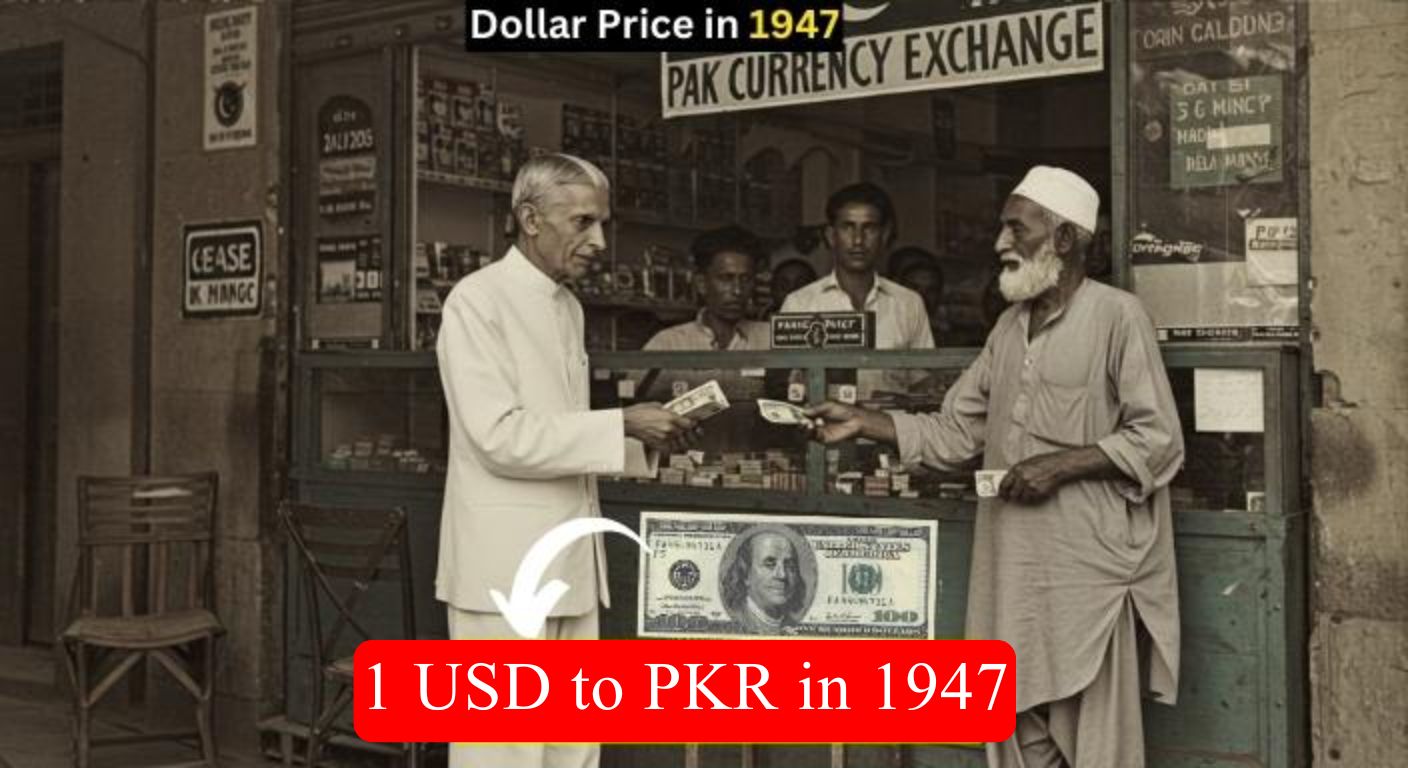Today, 1 US dollar is equal to around PKR 283.35, but back in 1947, right after Pakistan’s independence, the same dollar was worth just PKR 3.31. This massive difference shows how much the Pakistani economy and currency have changed over nearly eight decades.
Dollar to PKR Exchange Rate History (1947 – 2025)
| Year | Rate (1 USD = PKR) | Key Point |
|---|---|---|
| 1947 | 3.31 | Independence; rupee linked with the British pound |
| 1955 | 4.76 | First devaluation to support exports |
| 1966 | 4.76 | Rate remained stable despite challenges |
| 1972 | 9.90 | After Bangladesh’s separation, rupee allowed to float |
| 1982 | 12.85 | Introduction of a managed float system |
| 1990 | 21.71 | Economic reforms and market liberalization |
| 2000 | 51.90 | Political instability and global sanctions |
| 2008 | 70.65 | Impact of the global financial crisis |
| 2009 | 83.50 | Sharp devaluation due to economic pressures |
| 2018 | 138.00 | IMF bailout and heavy depreciation |
| 2020 | 160.10 | COVID-19 pandemic hit the economy |
| 2023 | 286.58 | Record high during political and economic turmoil |
| 2025 | 283.35 | Current rate, slightly lower than last year’s peak |
Why the Dollar Rate Was Low in 1947
When Pakistan became independent in 1947, the rupee’s value was far stronger. Some key reasons include:
- Debt-Free Start: At independence, Pakistan had little external debt, so the currency was stable.
- Linked to the Pound: The rupee was tied to the British pound, which kept the exchange rate fixed at 3.31 per dollar.
- Limited Use of Dollars: Trade and financial dealings were mostly done in rupees or pounds. The dollar was mainly used for imports such as machinery and for foreign aid.
- Global Stability: Under the Bretton Woods system, the dollar was backed by gold, giving stability to global exchange rates.
First Changes in the 1950s
By the mid-1950s, Pakistan started borrowing from international lenders and receiving foreign aid. To support exports and deal with growing external needs, the rupee was devalued in 1955, and the dollar rate moved up to PKR 4.76. This was the first step in a long journey of gradual currency weakening.
How the Dollar Rate Reflects Economic Shifts
Looking at the dollar-to-rupee history shows how Pakistan’s economy has faced ups and downs:
- 1970s: After the separation of East Pakistan (Bangladesh), the rupee was allowed to float. In 1972, the rate jumped to nearly PKR 10 per dollar.
- 1980s–1990s: Global reforms, debt, and changing trade policies pushed the rupee down further, reaching around PKR 22 per dollar by 1990.
- 2000s: Political instability, sanctions, and global events like 9/11 affected the economy. By 2000, the dollar had crossed PKR 50.
- 2008–2009: The global financial crisis and local challenges led to another sharp fall, with the rate touching PKR 83.50.
- 2018–2020: An IMF bailout, high imports, and COVID-19 pressures weakened the rupee further, with the dollar crossing PKR 160.
- 2023: Pakistan faced one of its toughest economic periods, with political uncertainty and high inflation pushing the dollar to a record 286.58 PKR.
Where the Rate Stands in 2025
As of 2025, the exchange rate is around PKR 283.35 per dollar, slightly below the all-time high of 2023. While remittances of over $30 billion annually are helping the economy, inflation (around 9%) and external debt still make the exchange rate a central issue for ordinary citizens.
Why the Dollar Still Matters Today
Even after 78 years of independence, the dollar continues to play a major role in Pakistan’s economy:
- For Trade: Most international trade deals are settled in dollars.
- For Education and Travel: Students and travelers abroad rely on the dollar exchange rate.
- For Savings: Many people use dollars as a hedge against inflation.
- For Government Finances: Loan repayments and reserves are largely dollar-based.
This makes the dollar-to-rupee exchange rate an everyday concern for businesses, workers, and households.
Conclusion
From just PKR 3.31 per dollar in 1947 to around PKR 283.35 in 2025, the journey of the Pakistani rupee tells the story of the nation’s economic challenges and growth. While global pressures and internal issues have often weakened the rupee, remittances, exports, and reforms still provide hope for stability.

